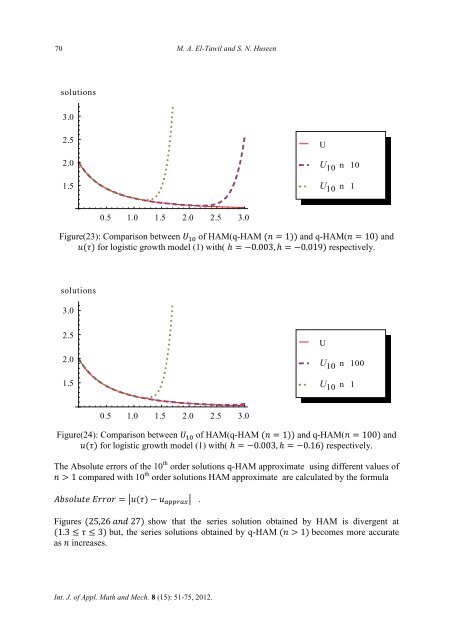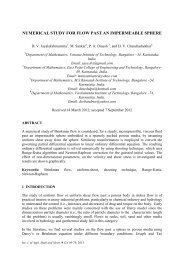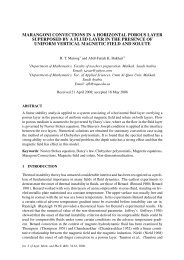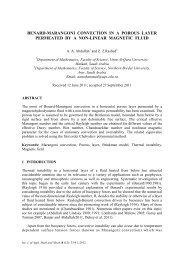THE Q-HOMOTOPY ANALYSIS METHOD (Q-HAM) - IJAMM
THE Q-HOMOTOPY ANALYSIS METHOD (Q-HAM) - IJAMM
THE Q-HOMOTOPY ANALYSIS METHOD (Q-HAM) - IJAMM
Create successful ePaper yourself
Turn your PDF publications into a flip-book with our unique Google optimized e-Paper software.
70<br />
solutions<br />
3.0<br />
2.5<br />
2.0<br />
1.5<br />
Int. J. of Appl. Math and Mech. 8 (15): 51-75, 2012.<br />
M. A. El-Tawil and S. N. Huseen<br />
0.5 1.0 1.5 2.0 2.5 3.0<br />
Figure(23): Comparison between of <strong>HAM</strong>(q-<strong>HAM</strong> and q-<strong>HAM</strong>( and<br />
for logistic growth model (1) with( respectively.<br />
solutions<br />
3.0<br />
2.5<br />
2.0<br />
1.5<br />
0.5 1.0 1.5 2.0 2.5 3.0<br />
Figure(24): Comparison between of <strong>HAM</strong>(q-<strong>HAM</strong> and q-<strong>HAM</strong>( and<br />
for logistic growth model (1) with( respectively.<br />
The Absolute errors of the 10 th order solutions q-<strong>HAM</strong> approximate using different values of<br />
compared with 10 th order solutions <strong>HAM</strong> approximate are calculated by the formula<br />
| | .<br />
U 10 n 10<br />
U 10 n 1<br />
Figures show that the series solution obtained by <strong>HAM</strong> is divergent at<br />
but, the series solutions obtained by q-<strong>HAM</strong> becomes more accurate<br />
as increases.<br />
U<br />
U<br />
U 10 n 100<br />
U 10 n 1





